The cartoonists making mental health their muse
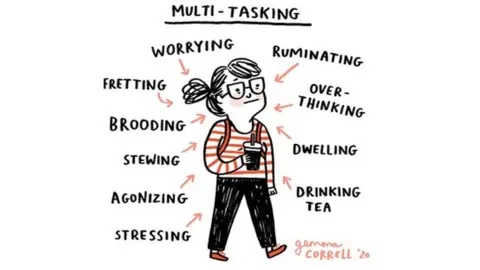 Gemma Correll
Gemma CorrellComics are not just about superheroes. Emily Oomen meets the artists shaping graphic medicine - a genre focused on the experience of living with illness.
Ellen Forney was in her twenties and working as a professional cartoonist when she stumbled into the world of graphic medicine.
The artist had been working for one of Seattle's long-running newspapers The Stranger when, in 1998 and just before she turned 30, she was diagnosed with bipolar disorder.
She says the diagnosis "sank in like the sun had gone behind the clouds".
Comics had always been a familiar language and format for Forney. She turned to them looking for comfort and was excited to discover a new genre she had never heard of - graphic medicine.
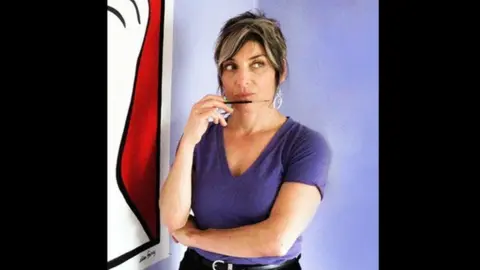 Jacob Peter Fennell
Jacob Peter Fennell The genre focuses on and discusses topics within the medical field from cancer to Alzheimer's and anorexia in an engaging and entertaining way.
Although developed for patients and medical professionals as a way to explore different conditions, it is now often found in general stores and libraries.
Forney who was comfortable telling stories through this medium, started to create comics for herself about her experience of living with mental illness.
"I wrote a lot in my journals," she says. "I didn't know that those were going to be pieces of a comic, a memoir later, but it's kind of how it comes out of me, in words and pictures."
She says it gave her great solace while she learned to manage the condition.
After several years of creating comics for herself she designed a graphic memoir of the experience - Marbles: Mania, Depression, Michelangelo, and Me.
"I felt like I needed to do it for myself and to get it out there to reach other people - because I can, because I'm a storyteller, and I thought it was an important story to tell.
"It's not just 'here's my experience, that was a mess', but how do we put those pieces together? How do we come to heal?"
 Ellen Forney
Ellen Forney One story in Marbles, illustrated in black and white, tells the moment where Forney noticed her mood had lifted after she had starting taking a new antidepressant.
Standing in the shower she realised the water droplets looked like lanterns at a night festival and said the joy she felt at seeing images-within-images made her feel that things were looking up.
Making the memoir, "was a very, very thorough excavation of my experience," Forney says. "I felt like I came to understand [my bipolar disorder] and wrap my head around it better.
"An important part of what we have as a storyteller is...we can offer, if not solutions, at least the possibility of hope."
The memoir, published in 2012 is now considered part of the graphic medicine canon.
Forney, who has taught the art of comics at the Cornish College of the Arts since 2002, has also created artwork for Seattle's Capitol Hill light rail station and collaborated on the award-winning illustrated novel, The Absolutely True Diary of a Part-Time Indian.
But graphic medicine remains an important part of her life. She recently published her latest book, Rock Steady: Brilliant Advice From My Bipolar Life which is a self-help survival guide full of tips, tricks, and tools that can help those living with bipolar disorder thrive.
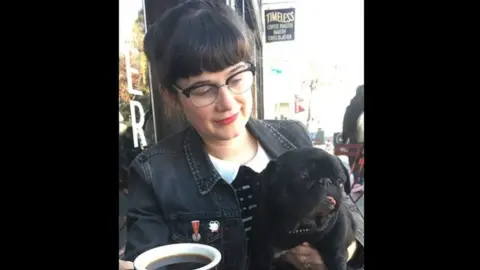 Gemma Correll
Gemma Correll"One of the things that's really, really important, is a sense of humour," Forney says. "It's one of the ways to give yourself some sort of perspective when you're telling a story."
British cartoonist Gemma Correll agrees. "It can be good to laugh at yourself sometimes, especially when you feel really bad."
She says graphic medicine has helped her convey her experience of anxiety and depression and she incorporates humour in a way that is relatable to many people.
In her comic version of Sleeping Beauty, while she depicts two fairies giving baby Aurora nice presents, the third gives her the gift of a lifetime of clinical depression.
As the saying goes, laughter can be the best medicine.
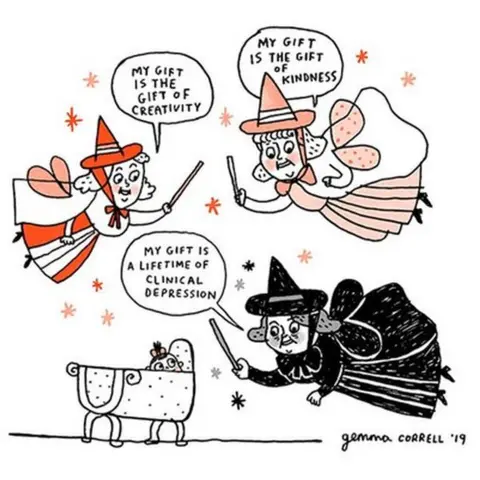 Gemma Correll
Gemma CorrellCorrell, who has been featured by the BBC, The New York Times and Mindful Magazine, says: "One of the hardest things I think about mental illness is actually being able to describe how you feel.
"If I needed to go to the doctor or a counsellor, I would have a really hard time vocalising any problems that I was having. So I would always write them down instead and just give them the paper and say 'this is how I'm feeling'."
Not only have Forney and Correll's comics helped them personally, they have also helped readers find solidarity and recognise their own mental health challenges.
One of Gemma's readers told her the comic "helped me articulate how I feel like I haven't been able to put it into words until now".
While many people with mental illness can feel alone in their experience, Forney has also been able to find company through graphic medicine.
She said that after releasing Marbles she was "blown away and delighted to find that there was this whole community of people who also found that comics [were] an important and really valuable way to tell these stories of health".
Dr. Ian Williams, a cartoonist and physician based in Brighton, UK, was the first to coin the term "graphic medicine" and created the Graphic Medicine organisation which brings artists and enthusiasts together.
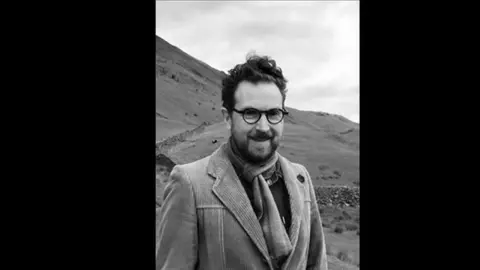 Ian Williams
Ian WilliamsHe did so while studying for a medical humanities degree "partially as an excuse to put off getting down to writing my dissertation," he says.
Williams defines graphic medicine as "anything that happens or is happening at the interface between the medium of comics and the discourse of healthcare".
While Covid-19 has put a stop to any physical events in the past year, it has not stopped the community coming together.
The organisation, Graphic Medicine, has held monthly virtual meet-ups called Drawing Together where the community comes together to draw, support one another and share.
They hope physical events may be able to take place soon.
While it was initially terrifying to be vulnerable and publish personal comics, Forney says: "I really, really wish that everyone with a mental disorder could have the experience of talking about it and getting the reaction of people saying 'me too!'
"It's astounding… It's given me a lot of strength to the point where I can just talk about it with the guy on the airplane next to me."
For more disability news, follow BBC Ouch on Twitter and Facebook and subscribe to the weekly podcast on BBC Sounds.

